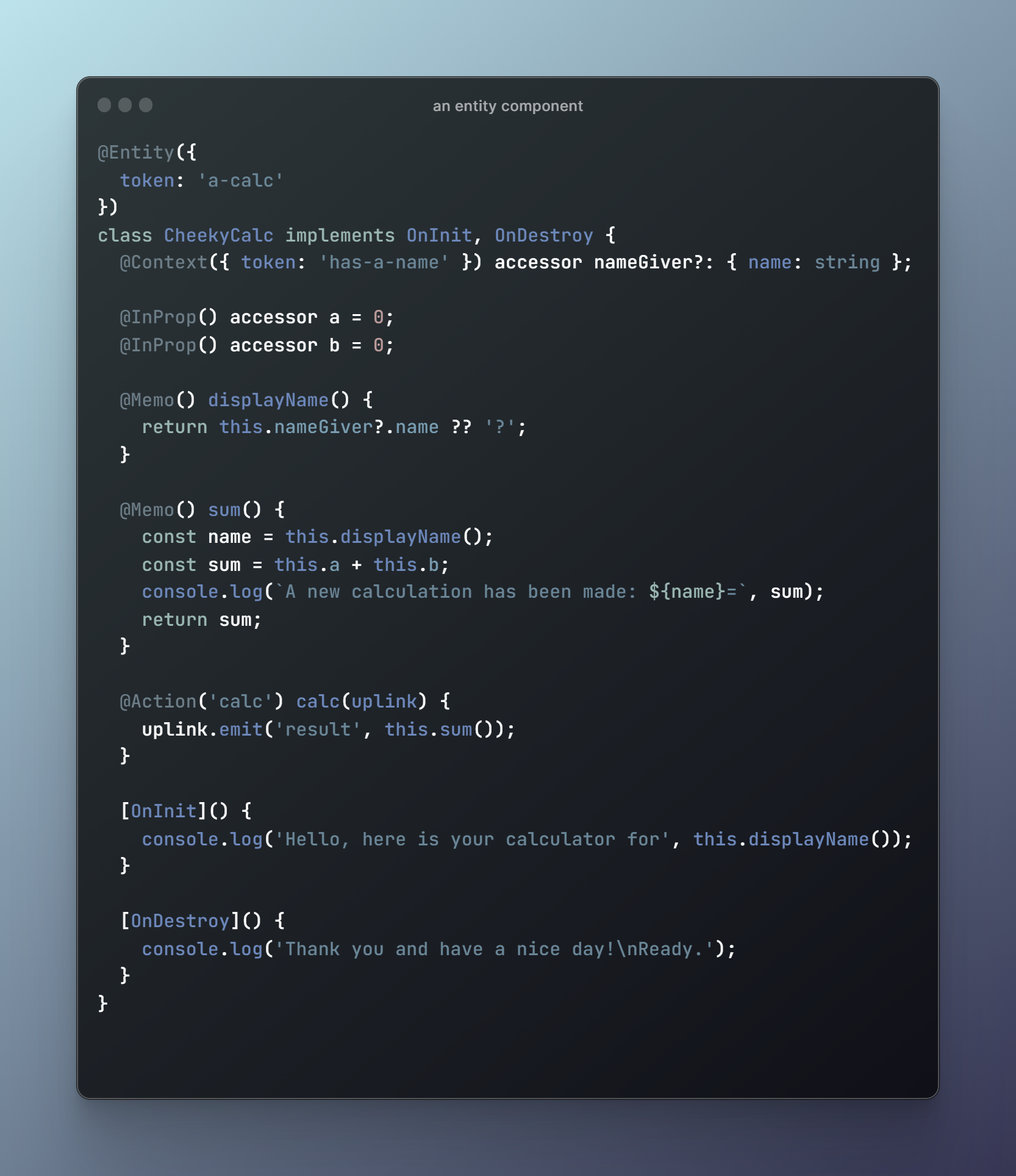Relocate your workload intensive components into web worker and communicate with them in your main thread by hierarchical view entities❗
a
frameworkmetaverse for your entities 🚀
the architecture of entity-verse is centered around four main sections:
- entity components (your domain model)
- entity view objects
- javascript api: bring your own framework: html, react, angular .. it's up to you
- ready to use web components api
- ready to use react api
- create an entity component environment with a kernel
- a worker env: all entities are living in a worker thread
- a local env (runs on the browser main thread)
- but don't forget to sync !
- kernel entity component ← token routing
- an entity is not an entity component, but an entity can consists of multiple components
- entity component object creation based on a registry and tokens
🔎 for a detailed description of what an entity is, see here
entity-verse provides the user with a decorator based api that can be used to create entity components. an entity component has the following properties:
- there are any number of input properties, aka
InProp's - components can react to events and can trigger events themselves
- entity components have a environment: components have a parent-child relationship to each other and thus live in a classical tree-like hierarchy
- a compoennt can be assigned to a parent component (but does not have to)
- a component can have one, none or multiple child components
- all in-props and context accessors are signals (using spearwolf/signalize)
- there is a clearly defined lifecycle model with callbacks (which the user can use if needed)
- the creation of the components is not done directly by the user, but indirectly via an entity kernel (more about this later)
In order to use these entities, the user must create a view instance for each entity. These frontends act as remote controllers for the actual entity.
<entity-view token="has-a-name" name="foo">
<entity-view id="calc" token="a-calc" a=100 b=1></entity-view>
</entity-view>
<script>
const el = document.getElementById('calc');
el.addEventListener('result', (e) => {
console.log('result is', e.detail);
});
el.dispatchEvent(new CustomEvent('calc'));
</script>If you do not want to use the predefined html elements (web components) which comes with this library, you can easily build your own view components with the javascript api:
const nameGiver = new EntityView({token: 'has-a-name'});
nameGiver.setProperty('name', 'foo');
const myCalc = new EntityView([token: 'a-calc']);
myCalc.setProperty('a', 100);
myCalc.setProperty('b', 1);
nameGiver.addChild(myCalc);
myCalc.on('result', (result) => {
console.log('result is', result);
})
myCalc.emit('calc');